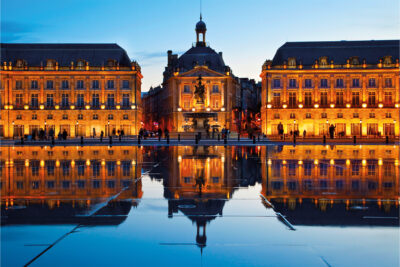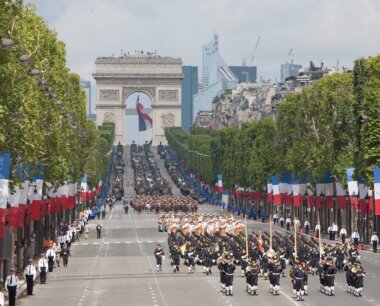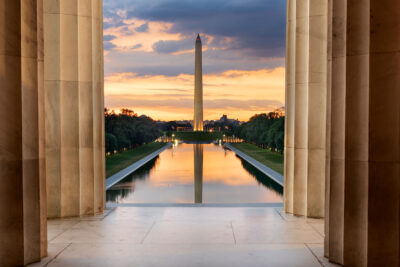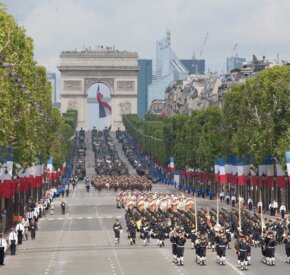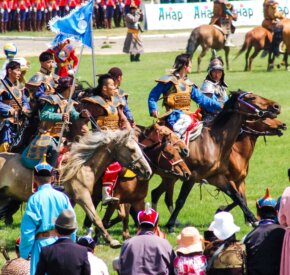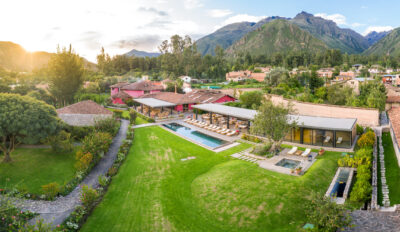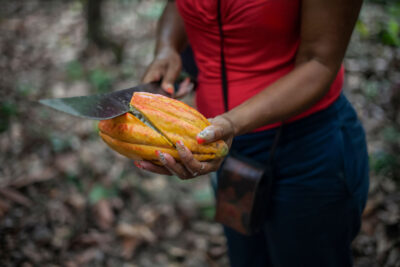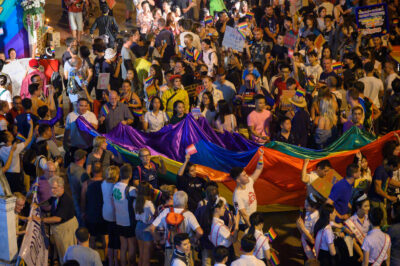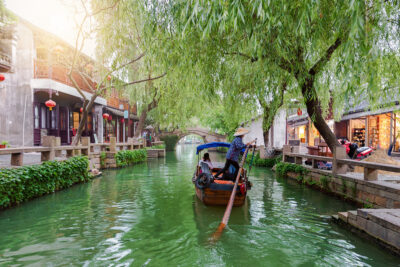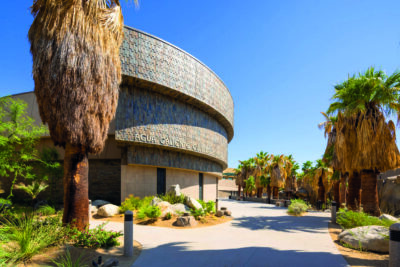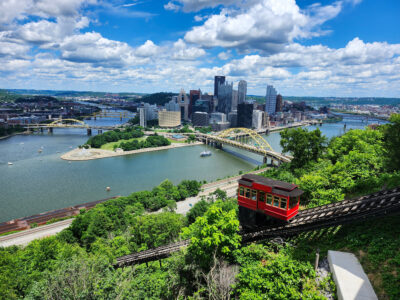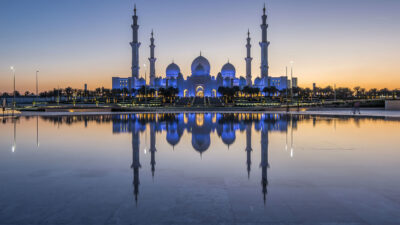
What to expect while visiting Abu Dhabi during Ramadan
The city comes to life during the Holy Month, with Ramadan tents, special cultural events and more
While living in the UAE, I often joked that we only had two seasons: Hot, and [bleep]ing hot. It isn’t strictly true – there is also that one week in January you’ll see people in puffer jackets (reader: it is 15°C), and the four-to-six weeks of Sweaty September – but the passage of time did feel different as opposed to when I was based in the UK.
Rather than being punctuated by seasons, the year is split into celebrations and events – you may not remember exactly when you saw that one band at that one concert, but it was around little Eid. That big trip you took? Maybe it was over National Day. And the last time you went to your favourite restaurant? Oh, it’s been ages – not since the F1 weekend.
It’s hard not to get caught up in the excitement in Abu Dhabi. The celebrations are quite literally in your face in the form of sparkling themed decorations taking over the emirate’s lampposts, with nighttime drives turning into a blur of red, green, and white to commemorate the birth of the nation on 2 December, followed by glittering racing cars popping up on Yas Island ahead of the Grand Prix.
When Ramadan rolls around, it’s time for crescent moons, lanterns and Ramadan Kareems (meaning have a generous month). Abu Dhabi might go big for every occasion, but this is undoubtedly the most special time of year.
The holiest month in the Islamic calendar, the 29-to-30 day month (which varies in length depending on the sighting of the crescent moon) sees Muslims around the globe fast between dawn and sunset. It’s a time for reflection, spending more time with family, and for charity.
There’s a perception that Ramadan is a sleepy, quieter month for visiting Abu Dhabi, but that’s only if you find you find yourself staying up too late at suhoor and nap the day away. Aside from some (minor) adjustments to opening hours, there’s just as much going on in the city during the daylight hours as there is after-dark.
Running on Ramadan time
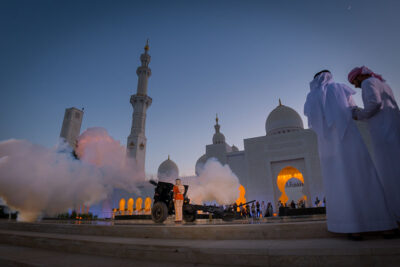
While Abu Dhabi is a late-night city year round – coffee shops typically close around 1am – this takes on a whole new meaning during Ramadan. The day’s meals must be consumed after dark, with iftar after the traditional Ramadan cannon is fired to mark the sunset and suhoor before the sky first begins to lighten.
Non-Muslims aren’t expected to fast, but experiencing it even for just a day gives you a greater insight into what Ramadan actually entails.
You’ll no doubt already know that dates are important across the Arabian peninsula, with palms lining the roads and farms found throughout the emirates, but you’ll appreciate them all the more when breaking your fast with one as the sweet fruit is a quick way to get an energy boost after a long day.
Emirati coffee culture is on display at iftars, too, and you might be surprised to find Vimto among the mix of soft drinks alongside rose water and other juices. Originally invented in Manchester, the drink was brought to the Middle East by Abdulla Aujan & Brothers in the late 1920s, and has become one of the unofficial drinks of Ramadan.
That’s to say nothing of the food, which can be as simple or as sumptuous as you like. Ramadan tents, with an extensive buffet of Arabic mezze, staples like lamb ouzi and machboos (both spiced rice dishes), followed by kunafa (a treat with spun pastry, cheese and syrup) and luqaimat (fried dough balls soaked in sugar syrup) are a common sight, with Emirates Palace’s Majlis by the Sea among the most popular, but many restaurants may opt instead for a set menu, like international brands COYA, Hakkasan and Zuma, or homegrown legends like NIRI Restaurant & Bar, Mika and Cafe James. You can also dine like a Bedouin with iftar under the stars, either as part of a day trip or a stay at a desert hotel like Qasr Al Sarab Desert Resort or Al Wathba, a Luxury Collection Desert Resort & Spa.
We mentioned that the Holy Month is a time for charity, and this comes in many forms. Muslims are expected to give away a portion of their wealth to the needy, and zakat is typically donated during Ramadan, but you’ll also see fridges pop-up in residential areas, with people donating fruits, vegetables and meals to those with less, as well as charitable iftars throughout the city. One of the biggest happens at Sheikh Zayed Grand Mosque, with 35,000 meals handed out daily. Non-worshippers are more than welcome to visit the mosque as usual during Ramadan, but opening hours will change to accommodate a greater number of visitors during prayer times, particularly on Fridays. (NB: Sheikh Zayed Grand Mosque no longer offers abayas to rent, but you can purchase one in the underground mall on the way into the mosque).
Top tip: Eminence Ahmed El-Tayeb Mosque, part of the Abrahamic Family House on Saadiyat Island, is also open to non-worshippers. You can book a free tour and visit the mosque, church and synagogue that make up the complex, learning more about the three faiths and the thoughtful architecture of the buildings.
Exploring by night
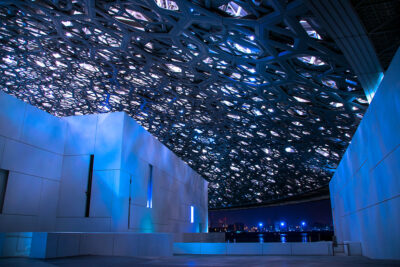
Food is certainly a great way to immerse yourself in Emirati culture, but it isn’t the only way to experience it post-iftar during Ramadan. Those with an interest in arts and crafts will be able to shop from local artisans at pop-up souks (markets) at Yas Bay Waterfront and Hudayriat Island, while art gallery Manarat Al Saadiyat hosts an annual Ramadan Arcade, where you can play retro games, listen to live Arabic music and take part in workshops.
Elsewhere on Saadiyat Island, Louvre Abu Dhabi puts on a special programme during the month, with free-to-visit temporary galleries after-hours and a series of talks, while the open-air Saadiyat Nights venue is transformed for suhoor. There, you’ll find be able to see artisans working on henna, calligraphy, and Al Talli (a UNESCO-listed type of embroidery from the UAE), listen to traditional musical performances and play games like carrom or backgammon. Plus, there are pop-ups from local businesses including cafés, restaurants and clothing brands.
One of our favourite night-time spots (year-round, but particularly during Ramadan) is Qasr Al Hosn. While Qasr Al Hosn itself is Abu Dhabi’s oldest stone building, it’s part of a wider complex that also contains a modern heritage site (the Cultural Foundation, the city’s first cultural institute dating back to 1981), as well as Al Musallah Prayer Hall. The latter, finished in 2019, is pure modern architecture with a mixture of geometric shapes reflected in the waters surrounding it, and is right next to the Michelin-starred Emirati restaurant Erth.
You can admire the architecture day or night, but come evening, the country’s living history is on display with poetry nights, live Oud performances and open majlis (a social space) sessions throughout Ramadan.
…and by day
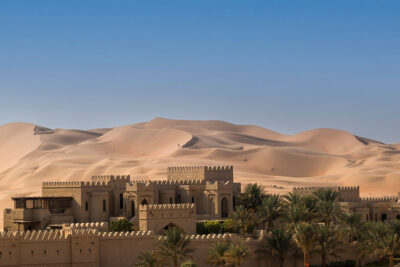
Much like when you’re planning a trip itinerary for any country around the globe, you can filter things to your interest: Enjoy the glitz and glam of Emirates Palace, or immerse yourself in culture at a museum or art gallery; fully embrace the spirit of Ramadan by fasting and adjusting your sleeping pattern, or don’t.
While you’ll need to be mindful in public spaces, where you’ll need to avoid eating, drinking or smoking, restaurants and cafés are still open for those who aren’t fasting (and long gone are the days of curtains blocking those eating from view). Alcohol is served during the Holy Month, although some restaurants who are serving iftar may choose not to do so, and I once encountered a bar that was bizarrely only serving alcohol after sunset. There are also no additional restrictions on what to wear (beyond the usual need to cover up when visiting a mosque or government building), so you can spend your day lazing around at Saadiyat Beach Club, or in your active gear as you kayak around Jubail Mangrove Park.
We’ve already mentioned visiting cultural sites like Qasr Al Hosn and Louvre Abu Dhabi at night, but all of the city’s cultural institutions are also open during the day, just with adjusted hours – either opening later, or with a break in opening in the early afternoon. At Saadiyat Cultural District, you’ll find the highest concentration of galleries and museums in the city, including the already-mentioned Louvre and Manarat Al Saadiyat, alongside Bassam Freiha Art Foundation and teamLab Phenomena, with the Zayed National Museum, the Natural History Museum and the Guggenheim due to open here later this year.
Those staying longer in Abu Dhabi during Ramadan should add Al Ain, aka ‘the garden city’, to their itinerary. Around an hour-and-a-half drive away from the city, visits here feel like both a step back in time and away from the harsh desert climate the UAE is associated with.
Perfect for exploring during the day, Al Ain is home to a number of oases – the most popular being Al Ain Oasis – which are UNESCO World Heritage listed. Making use of the ancient falaj irrigation system, you can walk, or cycle, among nearly 150,000 date palms and sidr trees here. Nearby Qasr Al Muwaiji, once the home of the late Sheikh Zayed bin Sultan Al Nahyan, the UAE’s founding father, is also UNESCO listed, and you can discover more about the country’s history here.
Night owls might prefer to embrace the Ramadan timings, but even if you’re not, there’s plenty going on in the city day and night to keep you busy – just be sure to keep an eye on opening hours either way.
Top tip: Pop-up cafés and restaurants often happen in Al Ain rather than the capital, particularly over the winter months. Recent pop-ups have included Le Pré at Qasr Al Muwaiji and Ethr at Al Ain Oasis, but keep your eyes peeled on Instagram for any new ones.
Where to stay
The Rixos Marina Abu Dhabi is a good option near the Corniche as a base for exploring sights like the Qasr Al Watan presidential palace and Qasr Al Hosn. On Saadiyat Island, hotels like Saadiyat Rotana and the Park Hyatt offer beach access and are close to the Cultural District.
For a desert stay worth travelling for, try Qasr Al Sarab Desert Resort or Bab Al Nojoum Bateen Liwa.
Getting there and around
Etihad (etihad.com) offers direct flights to Abu Dhabi from London Heathrow and Manchester; British Airways (ba.com) will resume daily flights from London from October 2025. Emirates fly to Dubai from a number of UK airports including Newcastle, Glasgow and Gatwick, and offer a free shuttle service for those who book a flight to Abu Dhabi with the airline.
The Experience Abu Dhabi Shuttle Bus has several routes covering many of the main attractions. Taxis are cheap and plentiful – silver taxis with yellow signs can be flagged down from the street, and will accept card and cash, or you can book through Yango.
More information
Go to visitabudhabi.ae.
Read next: 8 of the best things to do in Abu Dhabi







